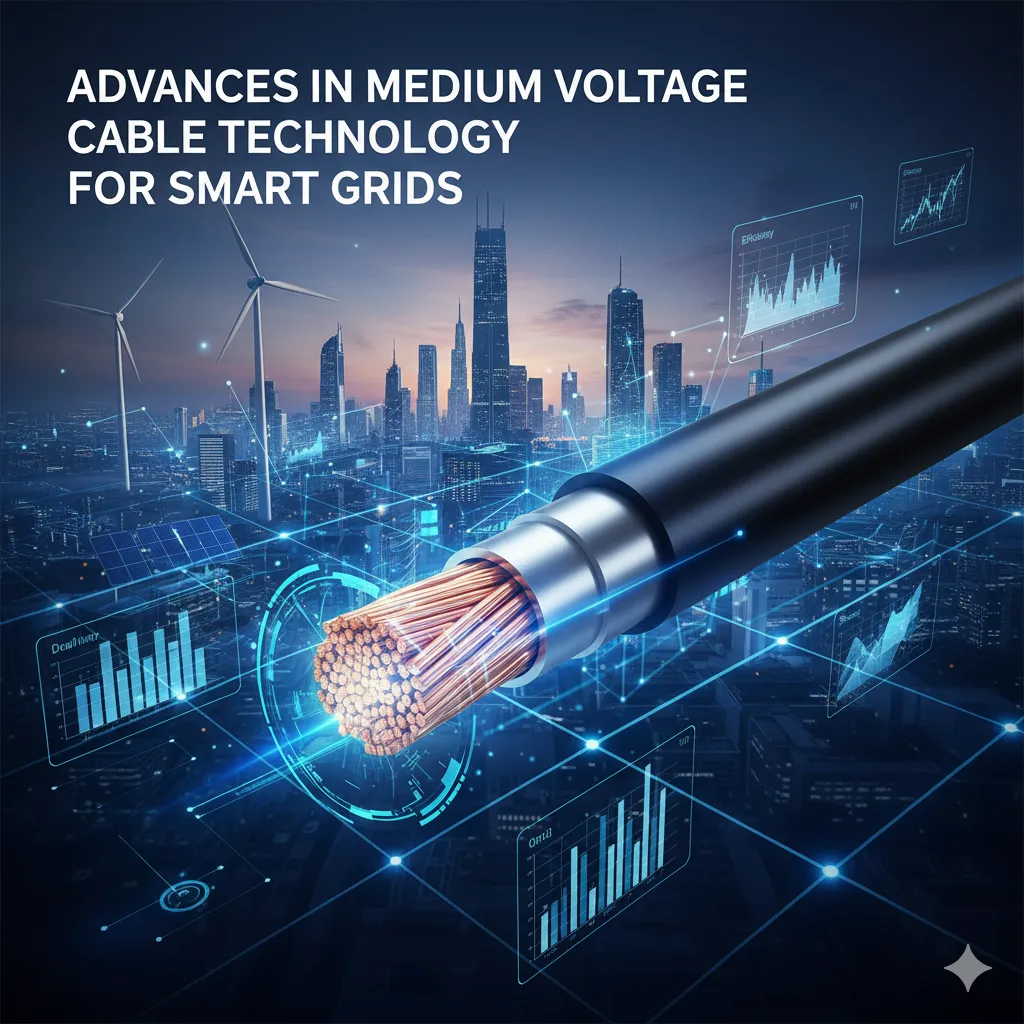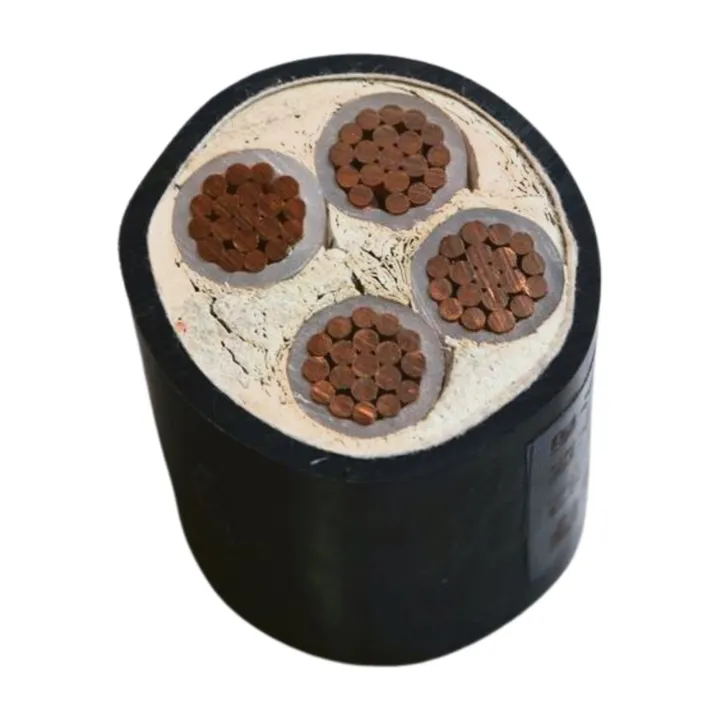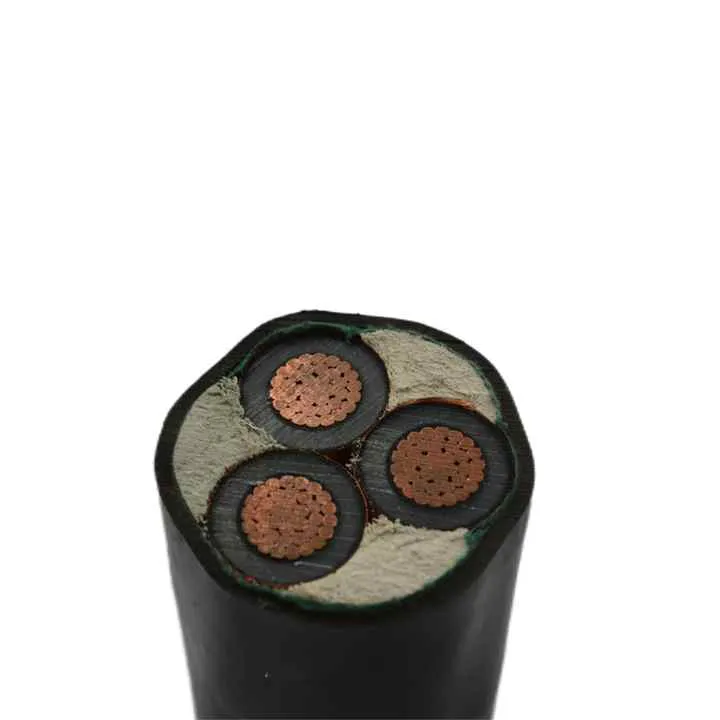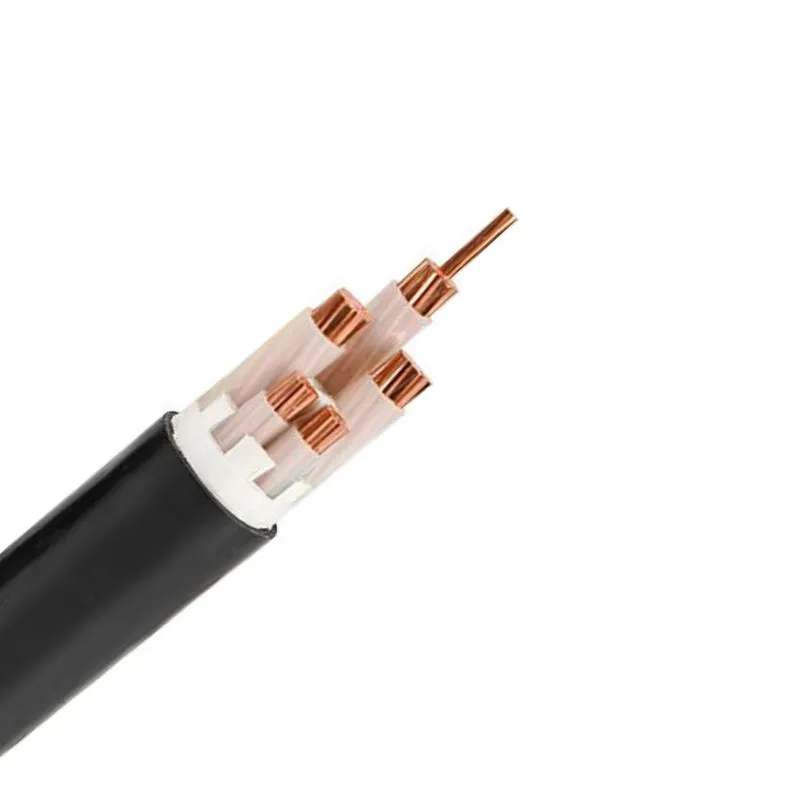Advances in Medium Voltage Cable Technology for Smart Grids
Time: 2025-10-22 08:22:36
Source: Henan Province Jianyun Cable Co., Ltd.
Medium voltage (MV) power cables, rated from 6 kV to 35 kV per IEC 60038, are pivotal in smart grid infrastructure, enabling efficient power distribution and integration of renewable energy sources. Advances in MV cable technology, including enhanced insulation, smart monitoring, and sustainable materials, are driving the evolution of smart grids. This guide explores these innovations, their benefits, and applications, with references to products from Henan Province Jianyun Cable Co., Ltd., presented in a formal and structured manner as of October 15, 2025.

1. Overview of MV Cables in Smart Grids
Smart grids leverage advanced technologies for efficient, resilient power distribution, integrating renewable sources, demand response, and real-time monitoring. MV cables serve as the backbone, transmitting power from substations to end-users while supporting bidirectional flow and fault detection. Innovations in MV cables enhance grid stability, reduce losses, and enable scalability. Henan Province Jianyun Cable Co., Ltd. offers TUV- and CCC-certified MV cables designed for smart grid applications, ensuring compliance with IEC 60502-2.
2. Key Advances in MV Cable Technology
Recent advances in MV cable technology address smart grid demands:
-
Advanced Insulation Materials:
-
XLPE with improved cross-linking enhances thermal resistance (90°C continuous, 250°C short-circuit), reducing losses.
-
Nanocomposite XLPE increases dielectric strength (>20 kV/mm) and partial discharge resistance (<5 pC).
-
Smart Monitoring and Sensors:
-
Embedded fiber-optic sensors for real-time temperature, PD, and fault detection, enabling predictive maintenance.
-
Integrated conductors with IoT-enabled monitoring for grid analytics.
-
Sustainable and Eco-Friendly Designs:
-
LSZH sheathing compliant with IEC 60754-1 reduces smoke/toxicity in urban grids.
-
Recyclable XLPE and bio-based insulators lower environmental impact.
-
Hybrid and Flexible Conductors:
-
Copper-aluminum hybrids optimize cost and performance for high-current applications (e.g., 200 A at 11 kV).
-
Flexible Class 5 conductors per IEC 60228 for easier installation in smart grid retrofits.
-
Example: Jianyun Cable’s nanocomposite XLPE MV cable with embedded sensors for smart grid monitoring.
|
Advance
|
Details
|
Benefits
|
|
Advanced Insulation
|
Nanocomposite XLPE, >20 kV/mm
|
Reduced losses, higher reliability
|
|
Smart Monitoring
|
Fiber-optic sensors, IoT integration
|
Predictive maintenance, fault detection
|
|
Sustainable Designs
|
LSZH, recyclable XLPE
|
Low environmental impact
|
|
Hybrid Conductors
|
Copper-aluminum, Class 5
|
Cost/performance optimization
|
3. Benefits of Advanced MV Cables for Smart Grids
These advances provide significant benefits:
-
Enhanced Efficiency: Low partial discharge (<5 pC) and resistance (<0.017 Ω/km for copper) minimize losses (e.g., <1.5% voltage drop over 1 km).
-
Improved Reliability: Smart sensors enable real-time monitoring, reducing downtime by 30% through predictive maintenance.
-
Safety and Compliance: LSZH sheathing complies with IEC 60754-1, reducing fire risks in urban grids.
-
Sustainability: Recyclable materials align with ESG goals, supporting net-zero targets.
-
Scalability: Flexible designs facilitate upgrades in expanding smart grids.
-
Example: Jianyun Cable’s smart MV cable with embedded sensors for renewable energy grids.
4. Applications in Smart Grid Projects
-
Renewable Integration: MV cables connect solar/wind farms to grids (e.g., 11 kV XLPE cables for inter-array connections).
-
Urban Distribution: Underground MV cables in smart cities for efficient power delivery with low losses.
-
Microgrids: MV cables enable bidirectional flow in distributed energy systems.
-
Substations: Advanced MV cables with monitoring support fault detection and automation.
-
Example: Jianyun Cable’s 12/20 kV XLPE-insulated MV cable for smart grid substations.
5. Standards and Compliance
-
IEC 60502-2: MV cable construction and testing (6–30 kV).
-
IEC 60038: Voltage classification.
-
IEC 60332-3: Flame-retardant properties.
-
IEC 60754-1: LSZH low smoke requirements.
-
Certifications: TUV, CCC, ISO 9001, RoHS/REACH.
-
Example: Jianyun Cable’s IEC 60502-2 compliant MV cables with TUV certification.
|
Standard
|
Details
|
|
IEC 60502-2
|
Construction, testing for 6–30 kV
|
|
IEC 60038
|
Voltage classification
|
|
IEC 60332-3
|
Flame-retardant
|
|
IEC 60754-1
|
LSZH low smoke
|
6. Challenges and Solutions
|
Challenge
|
Solution
|
|
High Costs
|
Use aluminum conductors; optimize designs for efficiency.
|
|
Installation Complexity
|
Use flexible Class 5 conductors; train installers per IEC 60364.
|
|
Environmental Damage
|
Select UV-resistant XLPE with LSZH sheathing; use conduits.
|
|
Regulatory Compliance
|
Partner with Jianyun Cable for TUV-certified cables; verify via databases.
|
|
Supply Volatility
|
Partner with manufacturers like Jianyun Cable for stable supply chains.
|
7. Conclusion
Medium voltage cables support renewable energy projects by enabling efficient power collection, grid integration, and system reliability, with features like XLPE insulation and SWA armoring. As the MV cable market grows to USD 76.31 billion by 2032, driven by renewables, innovations like sustainable materials and smart monitoring will shape the future. Henan Province Jianyun Cable Co., Ltd. offers TUV-certified MV cables tailored for solar and wind applications, ensuring compliance and performance. By selecting appropriate MV cables and addressing challenges, renewable energy projects can achieve safe, efficient operations for 25–30 years.




